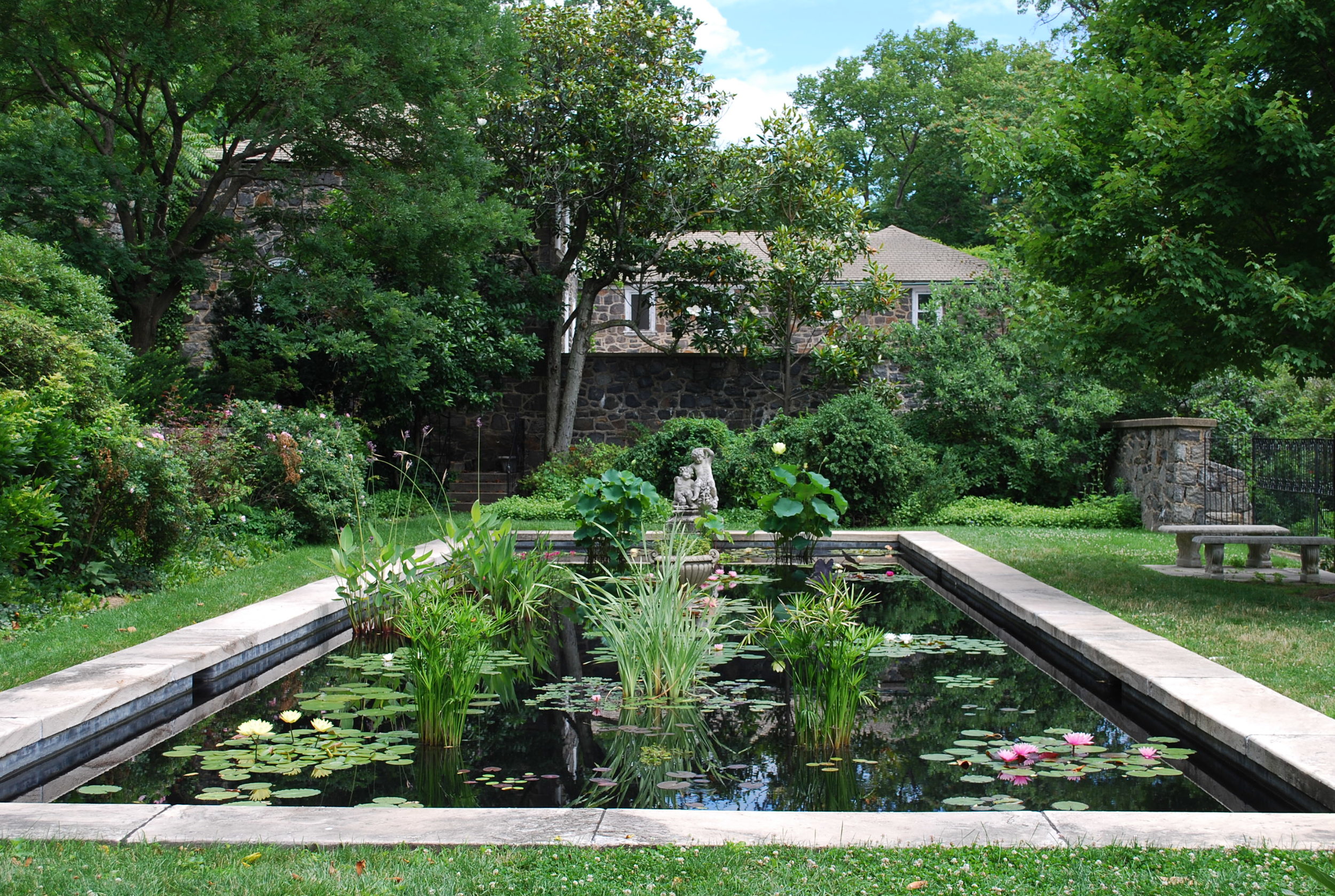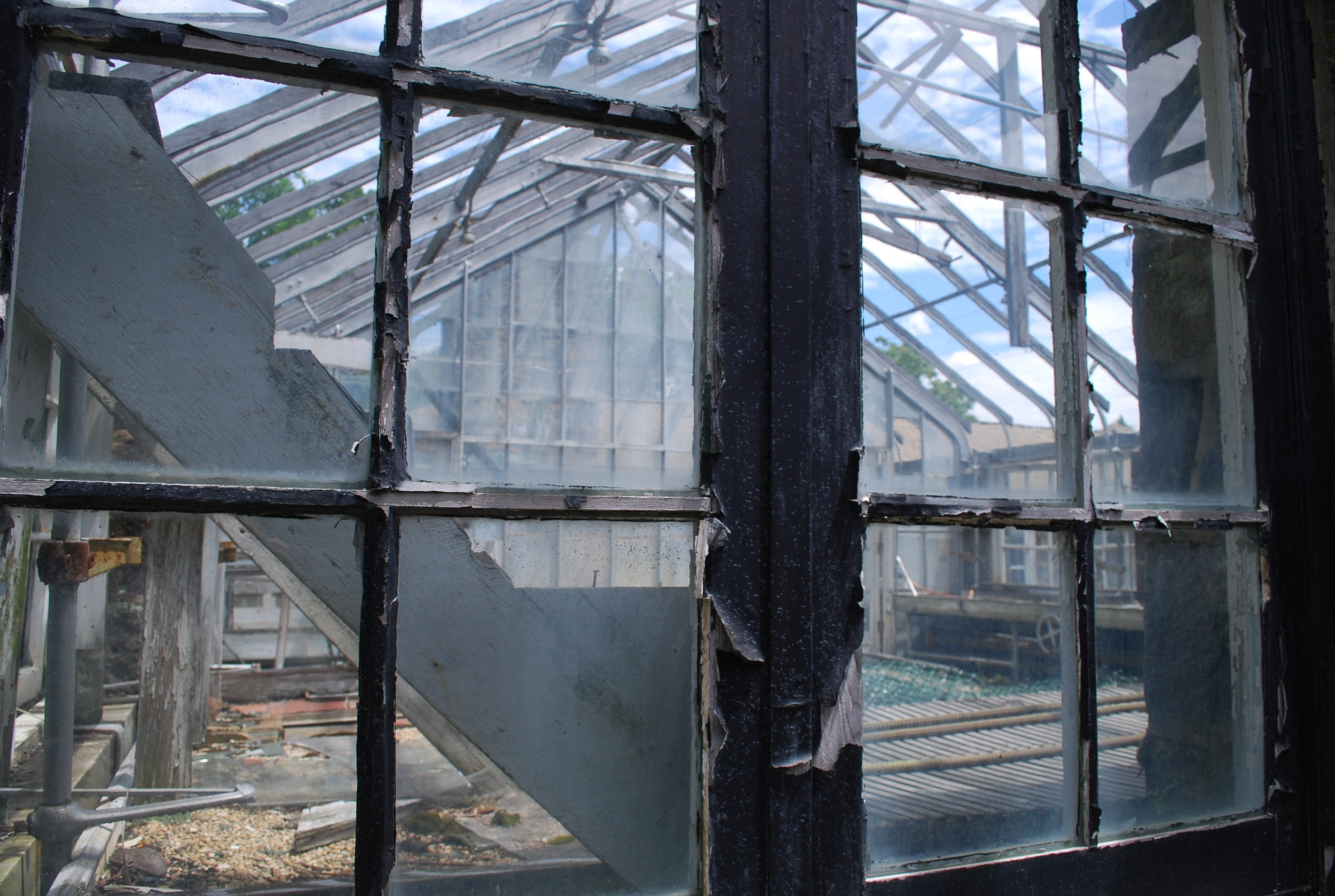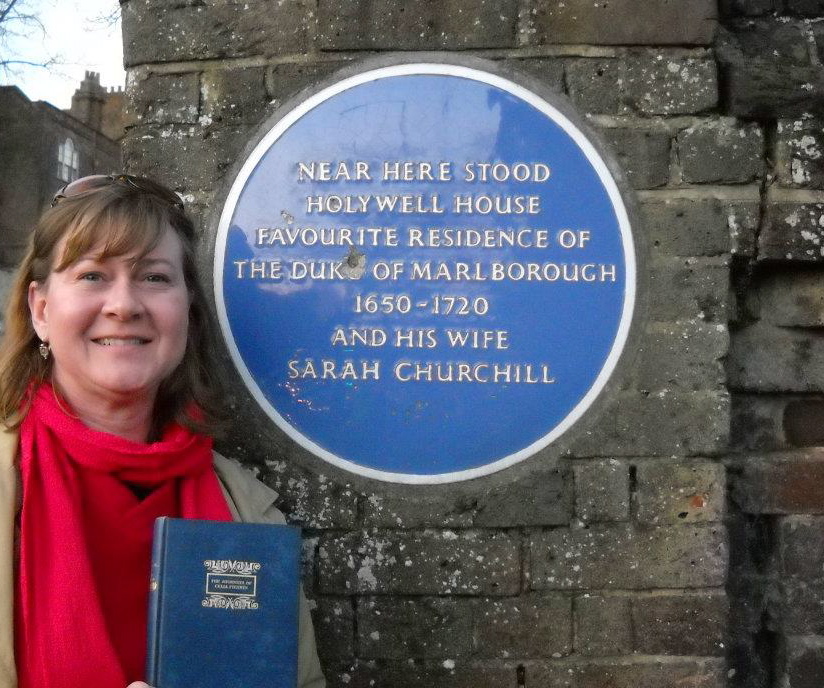5-10-5 Deb Wiles
 Hello and can you introduce yourself?
Hello and can you introduce yourself?
Hi, I’m Deb (in England they call me Debs) and I am the Director of Horticulture at Reeves-Reed Arboretum and a garden historian.
The Arts or Horticulture, which do you feel most associated with?
Both. They really go hand in hand, don’t they? Artistic ability runs in my family (the joke is it skips every other generation so my great-grandmother and my mom were/are talented artists. My brother and I decided to buck the trend and grabbed a bit of the talent as it tried to skip over us). I’ve always enjoyed drawing and would love to learn to paint. I’m also addicted to blank notebooks and the promise they hold, whether in pictures or words or both. I came to study horticulture later but as I delved into its history I found that art history and garden history are quite closely linked and give us a greater appreciation for each when you take the time to understand both.
Could you share with us a bit about yourself and your background?
I’m a native of Southern California. I learned to swim in my grandparents’ pool before I could walk. A competitive streak meant I tricked myself into learning to read sooner than teachers thought I could and now I have a book addiction. I also taught myself how to knit and also suffer a yarn addiction. That competitive streak lead me to take up epee fencing after having knee surgery (my doctor laughed at me when I suggested the idea). I’ve worked as a florist, shop girl, help desk girl, Sign Language interpreter, account manager, corporate training coordinator, and finally a horticulturist and garden historian.
Academically speaking, I have a BA in Deaf Studies with a concentration in Sign Language Interpreting, I studied Landscape Architecture and Horticulture at UCLA, I was a Professional Gardener Student at Longwood Gardens, did a 6-month internship at Great Dixter, and earned my MA Garden History with Distinction at University of Greenwich (London, not Connecticut).
Can you recall your first gardening memory? I remember sitting on a seat wall in my grandparents' garden and pinching the Oxalis seed heads. Not knowing they were weeds, I just liked how they exploded when I touched them! In our backyard there was a Pasiflora vine that attracted Western Gulf Fritillaries so there were caterpillars everywhere, then chrysalises, then butterflies. That was the first time I connected an insect to a particular plant but didn’t understand the importance of that connection until much later.
As Director of Horticulture at Reeves-Reed Arboretum what does your role entail?
I’m basically in charge of the 13.5 acres of historic and modern gardens and woodlands that make up Reeves-Reed. I manage one excellent horticulturist and an awesome intern, and there is plenty to keep the three of us busy! Besides working in the garden, I also develop adult education programs, write policies and grants, work closely with all the other directors and managers since the grounds are used for children's events, weddings, parties, etc., and work with contractors. While managed independently, the Arboretum is owned by the city so I also sit on the city's Shade Tree Committee and interact with various city administrators on certain issues.
What ideas do you plan on implementing while working at Reeves-Reed Arboretum?
We're currently in the process of developing a master plan that will help prioritize projects that need doing. The past few years have been defined by storm damage where clean up and triage were the priorities in the gardens. Now (fingers crossed) we can turn attentions back to restoring the historic core which was designed by Calvert Vaux, Ellen Biddle Shipman, and Charles Pilat and improving the modern areas. In doing my research, I discovered that each of those designers was influenced in some way by William Robinson so I’d love to incorporate his philosophy of the ‘wild garden’ into the gardens and kick up the plantsmanship a notch or two. I also want to put to work the valuable lessons I learned at Great Dixter. Some of their methods are a century old but still work beautifully, are sustainable, and are still very applicable to a garden like Reeves-Reed today.
Future plans for Reeves- Reed Arboretum?
All kinds of horticultural mischief! I’m immersing myself in books by William Robinson, David Culp, Keith Wiley, Christopher Lloyd, and the journal I kept while at Dixter to get ideas for plant combinations and new things to try. I want the garden to retain its historic elegance but I also want to have fun and give people something new and unexpected to see.
A personal goal is to secure funding for our internships and establish a year-long apprenticeship. Currently the internships are unpaid which means we aren't able to attract students from outside our immediate area. Managing a historic garden comes with unique challenges and we need to train up the next generation of gardeners so that they're able to approach those challenges with confidence and skill and conserve our historic landscapes. You and I know how hard those in our field work and how much they have to learn so I feel it's only fair that they be compensated, even when they're still students.
How does having an MA in Garden History benefit your role as Director of Horticulture?
My interests and training in garden history totally benefit my role as DoH in that I know how to do the research needed for restoration projects, and I know how to “read” the landscape. Being familiar with the players and styles of the American Country Place Era also helps me make appropriate decisions with regard to plant choices and gardening styles throughout the gardens, whether in the historic core or not, so that the gardens relate to one another. It allows me to look back in order to move the garden forward in a way that honors the historic significance of the place while fulfilling its new role as a public arboretum.
If I was interested in becoming a garden historian, what steps or direction might you give about becoming one?
Step 1: Read, read, read and then read some more! Lots has been written about the subject since it became an academic interest 300-and-some years ago. Like most disciplines, it's possible to specialize in a particular era and you can find a wealth of information on just about every era of garden design there is. Garden history encompasses more than the changes in garden design over time, it touches on social, economic, political, military, architecture, science, and art history as well. When I say read, I mean everything you can get your hands on!
Step 3: Get thee a passport! Sure, you can look at glossy pictures of gardens in books and read about how, why, and by whom they were created, but gardens are spatial works of art and to be truly understood they need to be experienced in that dimension and with all the senses first hand. I had no idea how big the amphitheater at Claremont was until I went there, and you can't be overpowered by the warm scent of jasmine smothering the walls of a courtyard at the Alhambra by looking at a photo, or feel how truly vast a High Baroque avenue is until you stand at one end and fail to see the other.
Step 4: Get Involved and make friends in the field. The Garden History Society is a good place to start, as are the Garden Conservancy, and Library of American Landscape History. There's also the Archives of American Gardens at the Smithsonian, and the Institute of Historic Research in London offers excellent free lectures on garden history. And all those gardens that you're visiting – talk to the gardeners and curators! Every one that I've met has been incredibly welcoming and keen to share the story of their garden.
Step 5: Don't leave home without a journal, a pen, and a camera. Ever! And don't keep the stories to yourself – share them with others. Keep a blog, write for magazines, submit scholarly articles to academic journals – something I've yet to do but I keep hearing my tutor's voice saying: “Just add 50,000 words to your dissertation and turn it into a book!”
Step 6: Constantly cultivate curiosity. Sometimes being a garden historian is more like being a garden history detective. People mistakenly think libraries and archives are boring but that's when it gets fun! I've had several 'OMG!' garden history moments in libraries!
If you had your choice to live in a historically important house and garden of your choice, which would you choose?
I always dream of winning the lottery and restoring the estate at Gibraltar Garden in Wilmington, DE. Another Ellen Biddle Shipman design, the garden is still open to visitors but has suffered benign neglect and the house is in a sorry state. It’s such a beautiful yet heart-breaking place, I can’t help but crave giving it a proper restoration whenever I visit! There was also a 17th century manor house recently for sale in England at a bargain price; if I win the lottery I can have both, right?
What is it about garden history that really grabs you?
I like stories and I like gardens and the fact that all gardens have a story to tell (or several stories), how those stories came to be, and why gardens change the way they do is what interests me. Also the detective work; the gardens I studied for my MA have undergone such drastic changes over the last few centuries and some no longer exist but with a little bit of snooping, you can still find evidence on the ground of past iterations of garden design. And I always get a little of the 'kid in a candy store' feeling when I go to the library and hold an ancient manuscript, or visit a historic family castle and hold their ancestor's 300 year old travel diary in my hands. It's like time travel, in a way.
Choosing a public or private garden, where inspires you?
Great Dixter is a given; Christopher Lloyd's and now Fergus's sense of adventure and experimentation with plant combinations and their respect for and sensitivity to old ways constantly inspire.
I know how much you loved being at Great Dixter, what is one of your best memories?
Meeting you and Mark and learning about Longwood...attending the symposium 9 years ago and meeting Linda Smith, who would become one of my best friends...Fergus cooking dinner for us on a makeshift bbq in the nursery...the time we went to see native Narcissus pseudonarcissus in the woods with Dan Hinkley...being introduced to Beth Chatto...going to Devon to collect Helenium for a trial and seeing Whistman's Wood...Thanksgiving with Rachael, James, Yannick and Emma making homemade pizzas...Bertrand and me being the first to stay in the new student rooms down at Dixter Farm and figuring out how to work the oven...Craig teaching me to use a lathe and turning my own mallet...seeing Lewis's wolf hat (or was it a fox) bobbing over the Solar Garden wall as he walked through the Wall Garden below...pricking out seedlings in the nursery...6am pot display changes...wait, did you mean just one!?
If you were to be left alone on an island and could choose one plant and one piece of art to take, what would you choose?
This will reveal what a geek I am! For a piece of art I would choose a Gallifreyan painting (from Doctor Who; Time Lord art, bigger on the inside! It's a stasis cube which captures a 3-D image of a moment in time that you can interact with). The image would, of course, be a fantastic garden at its peak that I could roam around in when island life became tedious. With that kind of painting I wouldn't have to choose just one plant because there would be many in the garden depicted in the artwork! (Is that cheating?)
What would your dream project be?
One of the sources of my MA dissertation was the travel diary of Celia Fiennes, a 17th-18th century noblewoman. She remarkably traveled through every county in England, visiting several great houses and gardens along the way. I would love to retrace her journeys and visit all the sites that she did, studying how the gardens have changed since she saw them. I'm researching her biography and have been to a few of the places she noted, but I would love to spend a year or two just focused on her and her travels!
What sources of creative outlets do you often turn to?
I knit, I keep a journal, I doodle, I daydream.
Words of advice that you care to share?
I guess the cliché is, “Don't be afraid to follow your dreams” but I think there's more to it than that. Dreams are powerful things and that power can propel you in directions you may not have imagined and might not be prepared for. They can put you in the company of giants and take you to distant, foreign lands. They upset your life in wonderful ways. So don't be afraid to follow your dreams, but respect the incredible power they hold, because sometimes you just never know where they'll take you!
----------------------
Thanks for the interview and for being an inspiration Deb. - James see more @: (gotsoil?)













